Lifeng Sun
A General Method For Automatic Discovery of Powerful Interactions In Click-Through Rate Prediction
May 21, 2021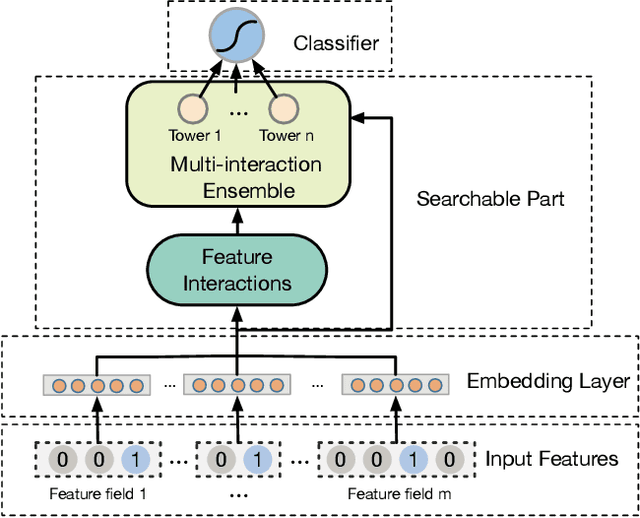
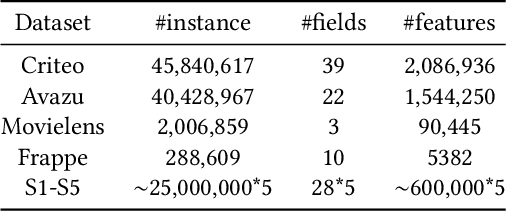
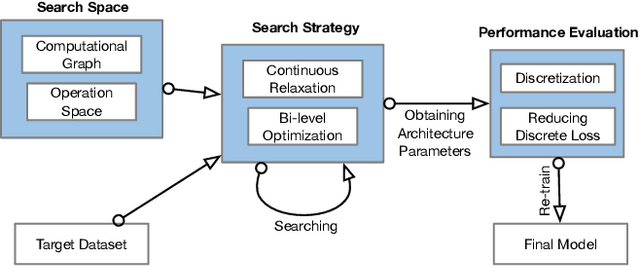
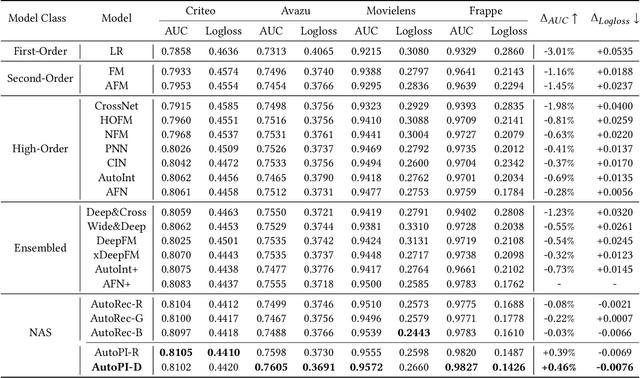
Abstract:Modeling powerful interactions is a critical challenge in Click-through rate (CTR) prediction, which is one of the most typical machine learning tasks in personalized advertising and recommender systems. Although developing hand-crafted interactions is effective for a small number of datasets, it generally requires laborious and tedious architecture engineering for extensive scenarios. In recent years, several neural architecture search (NAS) methods have been proposed for designing interactions automatically. However, existing methods only explore limited types and connections of operators for interaction generation, leading to low generalization ability. To address these problems, we propose a more general automated method for building powerful interactions named AutoPI. The main contributions of this paper are as follows: AutoPI adopts a more general search space in which the computational graph is generalized from existing network connections, and the interactive operators in the edges of the graph are extracted from representative hand-crafted works. It allows searching for various powerful feature interactions to produce higher AUC and lower Logloss in a wide variety of applications. Besides, AutoPI utilizes a gradient-based search strategy for exploration with a significantly low computational cost. Experimentally, we evaluate AutoPI on a diverse suite of benchmark datasets, demonstrating the generalizability and efficiency of AutoPI over hand-crafted architectures and state-of-the-art NAS algorithms.
Continual Local Training for Better Initialization of Federated Models
May 26, 2020


Abstract:Federated learning (FL) refers to the learning paradigm that trains machine learning models directly in the decentralized systems consisting of smart edge devices without transmitting the raw data, which avoids the heavy communication costs and privacy concerns. Given the typical heterogeneous data distributions in such situations, the popular FL algorithm \emph{Federated Averaging} (FedAvg) suffers from weight divergence and thus cannot achieve a competitive performance for the global model (denoted as the \emph{initial performance} in FL) compared to centralized methods. In this paper, we propose the local continual training strategy to address this problem. Importance weights are evaluated on a small proxy dataset on the central server and then used to constrain the local training. With this additional term, we alleviate the weight divergence and continually integrate the knowledge on different local clients into the global model, which ensures a better generalization ability. Experiments on various FL settings demonstrate that our method significantly improves the initial performance of federated models with few extra communication costs.
Adversarial Feature Alignment: Avoid Catastrophic Forgetting in Incremental Task Lifelong Learning
Oct 24, 2019Abstract:Human beings are able to master a variety of knowledge and skills with ongoing learning. By contrast, dramatic performance degradation is observed when new tasks are added to an existing neural network model. This phenomenon, termed as \emph{Catastrophic Forgetting}, is one of the major roadblocks that prevent deep neural networks from achieving human-level artificial intelligence. Several research efforts, e.g. \emph{Lifelong} or \emph{Continual} learning algorithms, have been proposed to tackle this problem. However, they either suffer from an accumulating drop in performance as the task sequence grows longer, or require to store an excessive amount of model parameters for historical memory, or cannot obtain competitive performance on the new tasks. In this paper, we focus on the incremental multi-task image classification scenario. Inspired by the learning process of human students, where they usually decompose complex tasks into easier goals, we propose an adversarial feature alignment method to avoid catastrophic forgetting. In our design, both the low-level visual features and high-level semantic features serve as soft targets and guide the training process in multiple stages, which provide sufficient supervised information of the old tasks and help to reduce forgetting. Due to the knowledge distillation and regularization phenomenons, the proposed method gains even better performance than finetuning on the new tasks, which makes it stand out from other methods. Extensive experiments in several typical lifelong learning scenarios demonstrate that our method outperforms the state-of-the-art methods in both accuracies on new tasks and performance preservation on old tasks.
Federated Learning with Unbiased Gradient Aggregation and Controllable Meta Updating
Oct 22, 2019



Abstract:Federated Averaging (FedAvg) serves as the fundamental framework in Federated Learning (FL) settings. However, we argue that 1) the multiple steps of local updating will result in gradient biases and 2) there is an inconsistency between the target distribution and the optimization objectives following the training paradigm in FedAvg. To tackle these problems, we first propose an unbiased gradient aggregation algorithm with the keep-trace gradient descent and gradient evaluation strategy. Then we introduce a meta updating procedure with a controllable meta training set to provide a clear and consistent optimization objective. Experimental results demonstrate that the proposed methods outperform compared ones with various network architectures in both the IID and non-IID FL settings.
Federated Learning with Additional Mechanisms on Clients to Reduce Communication Costs
Sep 01, 2019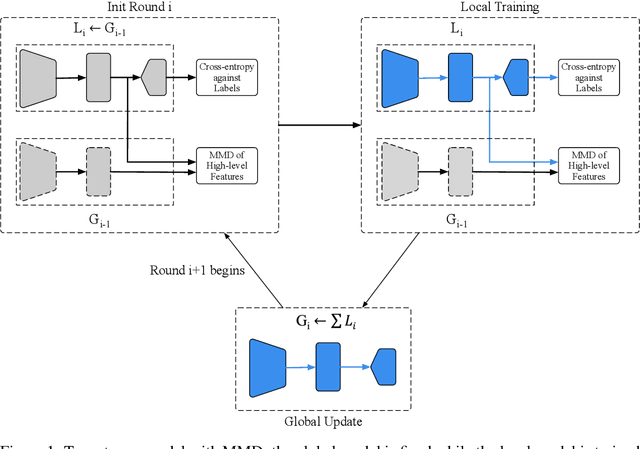
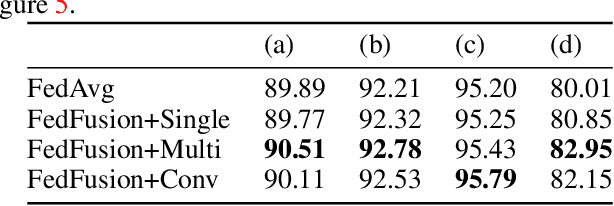

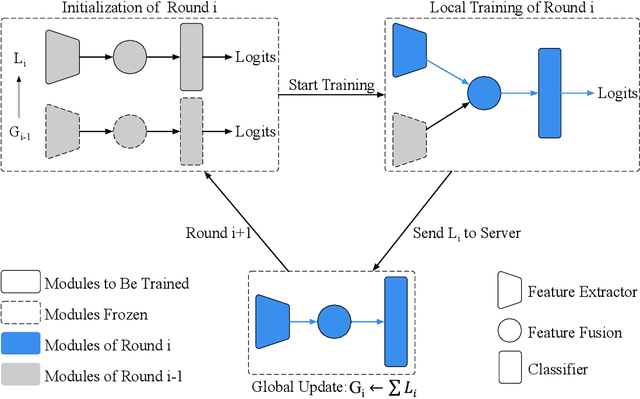
Abstract:Federated learning (FL) enables on-device training over distributed networks consisting of a massive amount of modern smart devices, such as smartphones and IoT (Internet of Things) devices. However, the leading optimization algorithm in such settings, i.e., federated averaging (FedAvg), suffers from heavy communication costs and the inevitable performance drop, especially when the local data is distributed in a non-IID way. To alleviate this problem, we propose two potential solutions by introducing additional mechanisms to the on-device training. The first (FedMMD) is adopting a two-stream model with the MMD (Maximum Mean Discrepancy) constraint instead of a single model in vanilla FedAvg to be trained on devices. Experiments show that the proposed method outperforms baselines, especially in non-IID FL settings, with a reduction of more than 20% in required communication rounds. The second is FL with feature fusion (FedFusion). By aggregating the features from both the local and global models, we achieve higher accuracy at fewer communication costs. Furthermore, the feature fusion modules offer better initialization for newly incoming clients and thus speed up the process of convergence. Experiments in popular FL scenarios show that our FedFusion outperforms baselines in both accuracy and generalization ability while reducing the number of required communication rounds by more than 60%.
Comyco: Quality-Aware Adaptive Video Streaming via Imitation Learning
Aug 06, 2019



Abstract:Learning-based Adaptive Bit Rate~(ABR) method, aiming to learn outstanding strategies without any presumptions, has become one of the research hotspots for adaptive streaming. However, it is still suffering from several issues, i.e., low sample efficiency and lack of awareness of the video quality information. In this paper, we propose Comyco, a video quality-aware ABR approach that enormously improves the learning-based methods by tackling the above issues. Comyco trains the policy via imitating expert trajectories given by the instant solver, which can not only avoid redundant exploration but also make better use of the collected samples. Meanwhile, Comyco attempts to pick the chunk with higher perceptual video qualities rather than video bitrates. To achieve this, we construct Comyco's neural network architecture, video datasets and QoE metrics with video quality features. Using trace-driven and real-world experiments, we demonstrate significant improvements of Comyco's sample efficiency in comparison to prior work, with 1700x improvements in terms of the number of samples required and 16x improvements on training time required. Moreover, results illustrate that Comyco outperforms previously proposed methods, with the improvements on average QoE of 7.5% - 16.79%. Especially, Comyco also surpasses state-of-the-art approach Pensieve by 7.37% on average video quality under the same rebuffering time.
Cross-Scale Cost Aggregation for Stereo Matching
Mar 03, 2014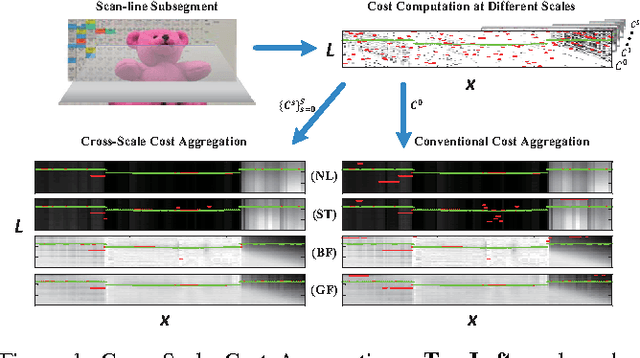

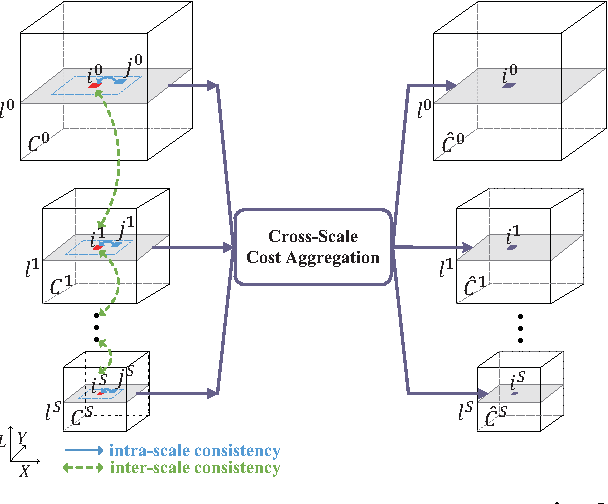
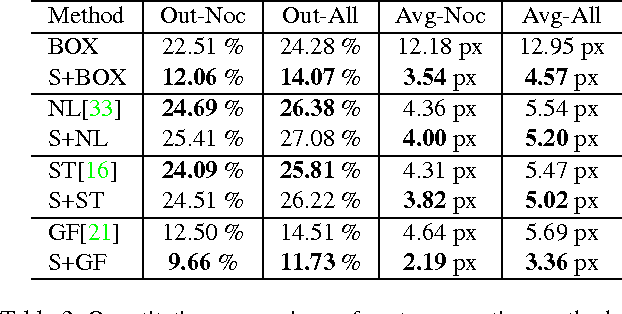
Abstract:Human beings process stereoscopic correspondence across multiple scales. However, this bio-inspiration is ignored by state-of-the-art cost aggregation methods for dense stereo correspondence. In this paper, a generic cross-scale cost aggregation framework is proposed to allow multi-scale interaction in cost aggregation. We firstly reformulate cost aggregation from a unified optimization perspective and show that different cost aggregation methods essentially differ in the choices of similarity kernels. Then, an inter-scale regularizer is introduced into optimization and solving this new optimization problem leads to the proposed framework. Since the regularization term is independent of the similarity kernel, various cost aggregation methods can be integrated into the proposed general framework. We show that the cross-scale framework is important as it effectively and efficiently expands state-of-the-art cost aggregation methods and leads to significant improvements, when evaluated on Middlebury, KITTI and New Tsukuba datasets.
Binary Stereo Matching
Feb 10, 2014
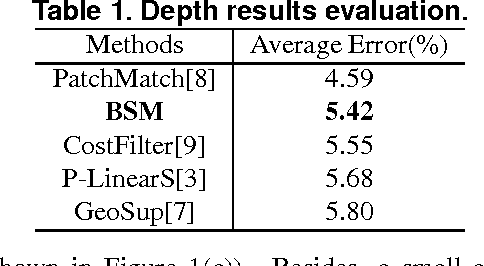
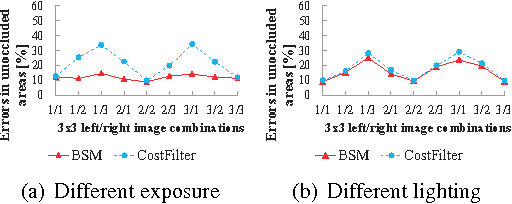

Abstract:In this paper, we propose a novel binary-based cost computation and aggregation approach for stereo matching problem. The cost volume is constructed through bitwise operations on a series of binary strings. Then this approach is combined with traditional winner-take-all strategy, resulting in a new local stereo matching algorithm called binary stereo matching (BSM). Since core algorithm of BSM is based on binary and integer computations, it has a higher computational efficiency than previous methods. Experimental results on Middlebury benchmark show that BSM has comparable performance with state-of-the-art local stereo methods in terms of both quality and speed. Furthermore, experiments on images with radiometric differences demonstrate that BSM is more robust than previous methods under these changes, which is common under real illumination.
 Add to Chrome
Add to Chrome Add to Firefox
Add to Firefox Add to Edge
Add to Edge